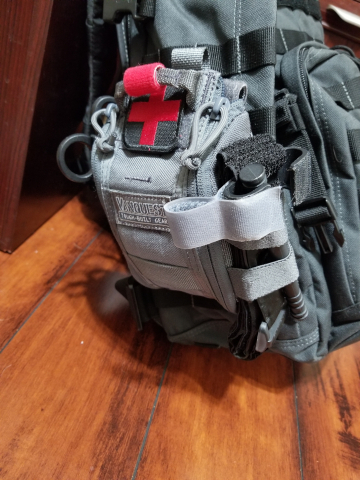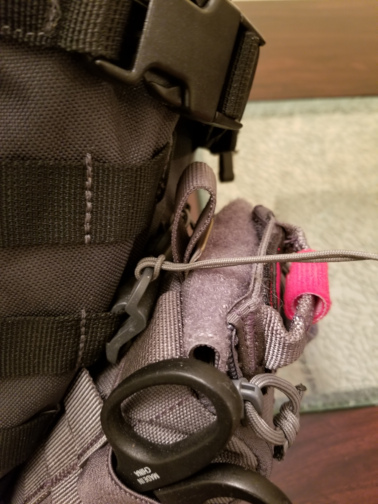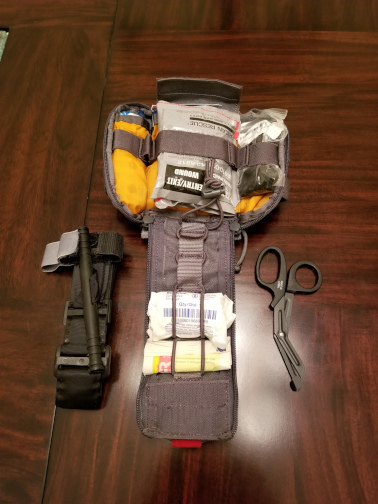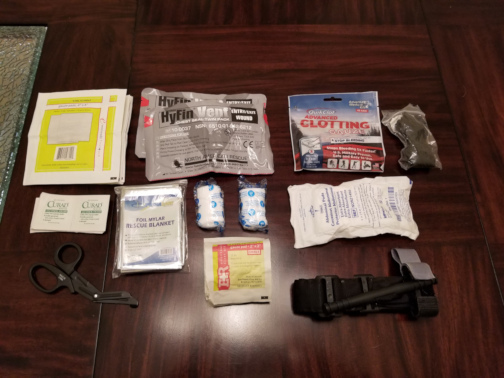May has been announced as the first “National Stop the Bleed” month. The “Stop the Bleed” campaign is trying to empower the general public to know how to deal with life-threatening emergencies usually involving rapid blood loss. There are many situations that this could be useful for a bystander, from car accidents to gardening disasters to gun shot injuries.
Last week, Brian Green posted about it, and I responded with a quick shot of my side bag.
May is National #StopTheBleed Month, raising awareness of the importance of being ready to treat traumatic injuries. Here are a few items that could save someone's life. Tourniquet, pressure bandage, clotting sponge, and nitrile gloves ➝ https://t.co/YluPFoeux1 #NSTBM19 pic.twitter.com/UVflTajQSW
— Brian Green (@bfgreen) May 13, 2019
May is National #StopTheBleed Month, raising awareness of the importance of being ready to treat traumatic injuries. Here are a few items that could save someone’s life. Tourniquet, pressure bandage, clotting sponge, and nitrile gloves ➝ http://bit.ly/2xaJ1o7 #NSTBM19
I meant to follow up with some additional details about the gear, but it was a busy week, and I didn’t get a chance. I figured it’d probably be a little easier in post format than tweets anyway. I built my kit myself, but mostly because I have a lot of stuff for other reasons. The kit is attached to my laptop bag, contained inside a VANQUEST FATPack 4x6.
It’s held onto my bag using some Molle Sticks, which have quick release pull strings making it easier to separate from my laptop bag if needed.
On one side of the pack is a pair of medical shears, and on the other is a CAT Tourniquet, both for quick access.
Once removed and opened up, I have some more stuff on the inside for trauma type situations.
Inside the pouch in the various pockets and loops I have quick clotting gauze, chest seals, Nitrile gloves, abdominal pad, couple of sizes of gauze pads, gauze bandage, and a Mylar blanket.
Gear List
- VANQUEST FATPack 4x6
- VANQUEST Molle Sticks
- Medical Shears
- C-A-T
- NAR Hyfin Vent Chest Seal
- QuikClot Clotting Gauze
- Nitrile Gloves
- Gauze Pads (4”)
- Gauze Pads (2”)
- Gauze Bandage
The total kit cost is about $190, but I already had a number of these items because of other things I’m involved in. There are a number of websites that sell prebuilt kits similar to this if you don’t want to go through the trouble of building them out yourself. This gives you an idea of what is in the kits, and what I carry every day.
All of these links are non-affiliate, but they do point to Amazon Smile. If you use Amazon, sign up to use Smile and your chosen charity gets money, and it costs you nothing when you buy stuff.
I would strongly suggest finding a class in your area, or if you can find an instructor to come to your place of work, school, community or worship, that would be even better as many people can learn at the same time. The classes are often free.



